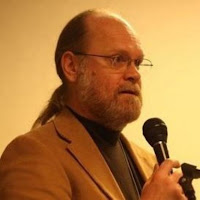NOTE: So I'm trying something new. I'm posting a couple of stories and thought sketches that I'm thinking about using in the sermon on Sunday. Here they are:
In the Gospel of Mark, there’s a story that goes like this: Jesus is in a little village called Capernaum (just so we’re all on the same page here, Capernaum is on the North side of the Sea of Galilee (map here; scroll down). He’s in a house and there’s a huge crowd gathered. The doorways are full of people. He’s been preaching, teaching, and healing all day, and a massive crowd has gathered. The house is packed.
The doorways are packed.
There are even people gathered around the house, trying to see what’s going on.
(It’s probably like a really popular concert or workshop that you've arrived late to...and there's lots of excitement and noise going on in the front, but you can't really see or hear much.)
So in this story, some folks on the outside climb up to the roof and pull off the tiles in order to lower a paralyzed man into the house, so Jesus can heal him.
Maybe you know this story?
Truthfully, I haven’t thought about it much since seminary.
But I’ve just finished a book called Tattoos on the Heart, by Father Greg Boyle, a Jesuit priest. Greg Boyle is the founder and executive director of Homeboy Industries, located in Los Angeles, the gang capital of the world. (Their motto and mission of Homeboy Industries is: "Nothing stops a bullet like a job.") Homeboy Industries provides jobs, tattoo removal, and much more, for former gang members. In one of the chapters, Boyle tells the story about the roof getting ripped off the house, so the paralyzed man can get to Jesus.
But before I dig into this story and why I think it’s relevant to us, let me suggest that first, we become "undone." Let me explain.
It seems to me that whenever we approach a story from the Bible (or any where else for that matter), we have to come “undone,” to let go of preconceived notions, of all that would prevent us from hearing the story in new, life giving ways.
We have got to come "undone" first…so that we can be “re-made”/”redone” in a deeper love and understanding, as the story works on us.
As an example, here's a story about being "undone" from Tattos on the Heart.
“In 1987," Greg Boyle writes, "the church made the decision to have homeless and undocumented men sleep at the church. Once the homeless began to sleep in the church at night, there was always the faintest evidence they’d been there.
Come Sunday morning, we’d foo foo the place as best we could. We would sprinkle, I Love My Carpet on the rugs….but the smell always remained….and the grumbling set in, and people spoke of “churching” elsewhere.
The smell was never overwhelming, just undeniably there…so we determined to address the discontent in our homilies one Sunday…So I begin with, ‘What’s the church smell like?’”
People are mortified, eye contact ceases, women search inside their purses for they know not what.
“Come on now,” I throw back at them, “what’s the church smell like?”
“Huele a patas” (smells like feet), Don Rafael booms out. He was old and never cared what people thought.
“Excellent. But why does it smell like feet?”
“Cuz many homeless men slept here last night?” says a woman.
“Well, why do we let that happen here?”
“Es nuestro compromiso” (it’s what we’ve committed to do), says another.
“Well, why would anyone commit to do that?”
“Porque es lo que haria Jesus.” (It’s what Jesus would do.)
“Well, then…what’s the church smell like now?”
A man stands and bellows, “Huele a nuestro compromiso (it smells like commitment).
The place cheers" (74).
Stink, stank, smell.
Undone, to be redone in the authority and spirit of compassion, generosity, commitment.
Back to the story in the Gospel of Mark.
As Greg Boyle says, ‘Jesus is in a house so packed that no can come through the door anymore…so the people open the roof and lower this paralyzed man down through it, so Jesus can heal him. The focus of the story is, understandably, the healing of the paralytic. But there is something more significant than that happening here:
They’re ripping the roof off the place, and those on the outside are being let in” (75).
“If we love what God loves,” writes Greg Boyle, "then, in compassion, margins get erased…and we dismantle barriers that exclude” (75).
There’s a simpler way to say this: compassion rips the roof off.
Literally, the roof had to be undone, tile by tile, so the circle of compassion could be re-done, wider than before.
---------
Obviously, I'm still working on this...it's no where near a final product..it's a work in progress. And because a sermon is a living thing, I'd love your thoughts and reactions to what's here, if you have a minute.
Here are some potential reflection questions to jump start your thinking:
*How does this story speak to your life and or your faith?
*What does commitment "smell like" in your life?
*What scares you about the kinds of commitments that kindness and compassion call you to?
*What makes you come "undone?" How are you different when you're put back together?
Thanks for reading and engaging! - Justin






